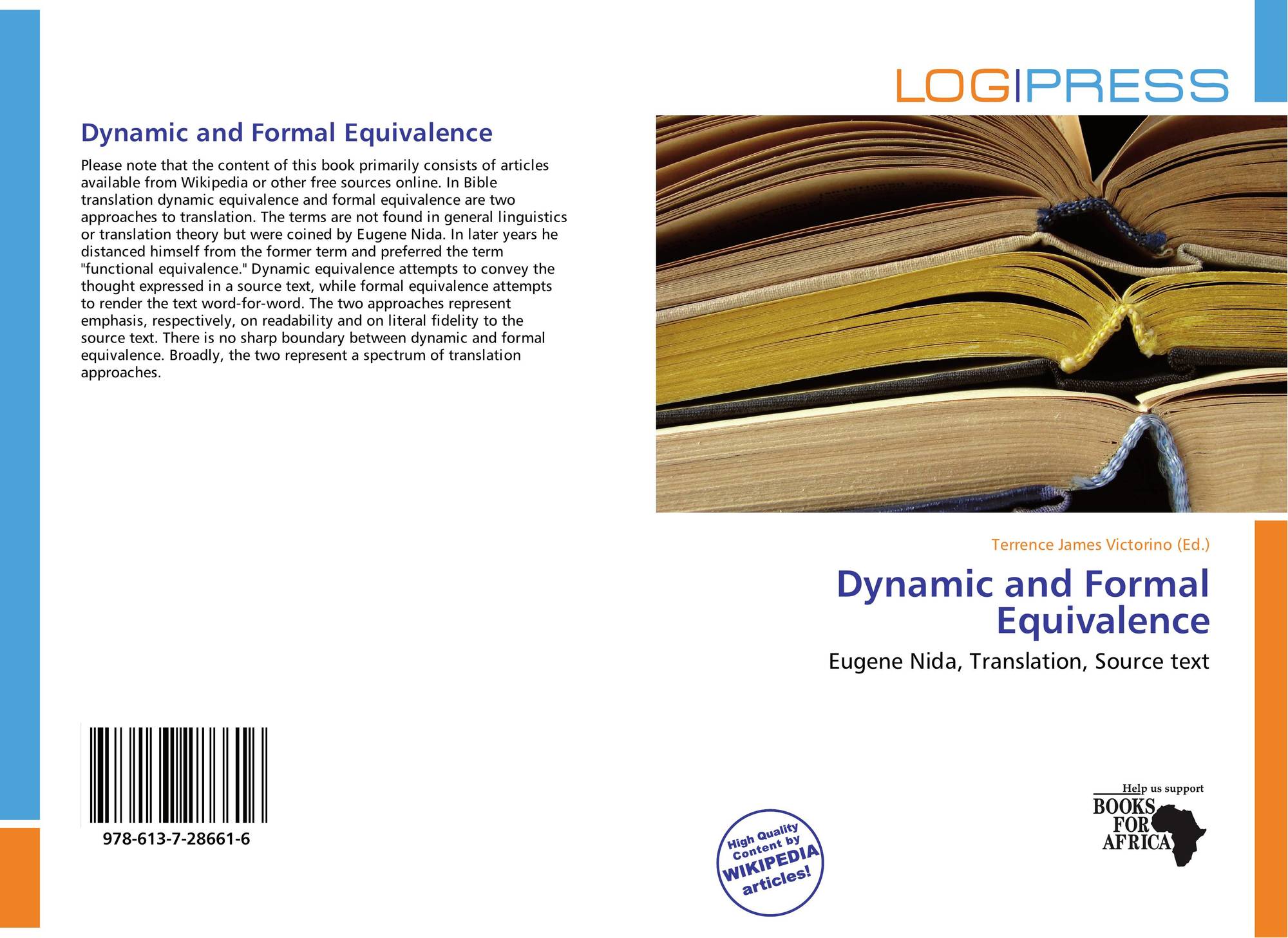


Moreover, for different target language, tender, number and tense should be taken into consideration in translation. Nida is an important translation theorist in the history of translation studies all over the world. In English-Chinese translation?singular and plural form is an important and evident problem?Plural meaning in Chinese is not expressed with any evident plural form?which is different in English. Keywords: Nida, Definition of translation, Philosophical perspective, Absolutization E. Sentence equivalence is more complicated than lexical equivalence. Scene context includes the concrete person and things involved in communication?the channel of communication?the relationship among participants and mental emotions. Formal equivalence is analogous to functional equivalence. In other words, the goal is to find the closest natural equivalent to the source-language message (Nida 1964: 166) or to convey the meaning of the ST in the TT as naturally. This is perfectly understandable if we take into account the context of the situation in which Nida was dealing with the translation phenomenon, that is to say, his translation of the Bible. Dynamic equivalence is based on ‘the principle of equivalent effect’: a concept by Nida focusing on equivalence of the relationship between the original receptor and message, and the target receptor and message. Nida and Taber state that dynamic equivalence is to be defined in terms of the degree to which the receptors of the message in the receptor language respond to it in substantially the same manner as the receptors in the source language. One can easily see that Nida is in favour of the application of dynamic equivalence, as a more effective translation procedure. Passage context lies in analysis of language?which aims to judge the meaning of words and semantic units in original text?and is based on analysis of meaning and connotation of the passage. Nida suggests that we must analyze the transmission of a message in terms of dynamic dimension. Passage equivalence consists of three pans: passage context?scene context and cultural context. Nida (1964: 166) says that defining a dynamic equivalent translation is to describe it as the closest natural equivalent to the source-language message.

In order to achieve passage equivalence?language is not the unique element we should consider, what we should also take into consideration is how the language represents meaning and performs its function in a specific context.


 0 kommentar(er)
0 kommentar(er)
